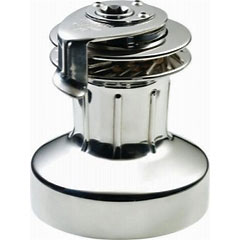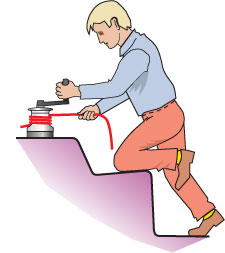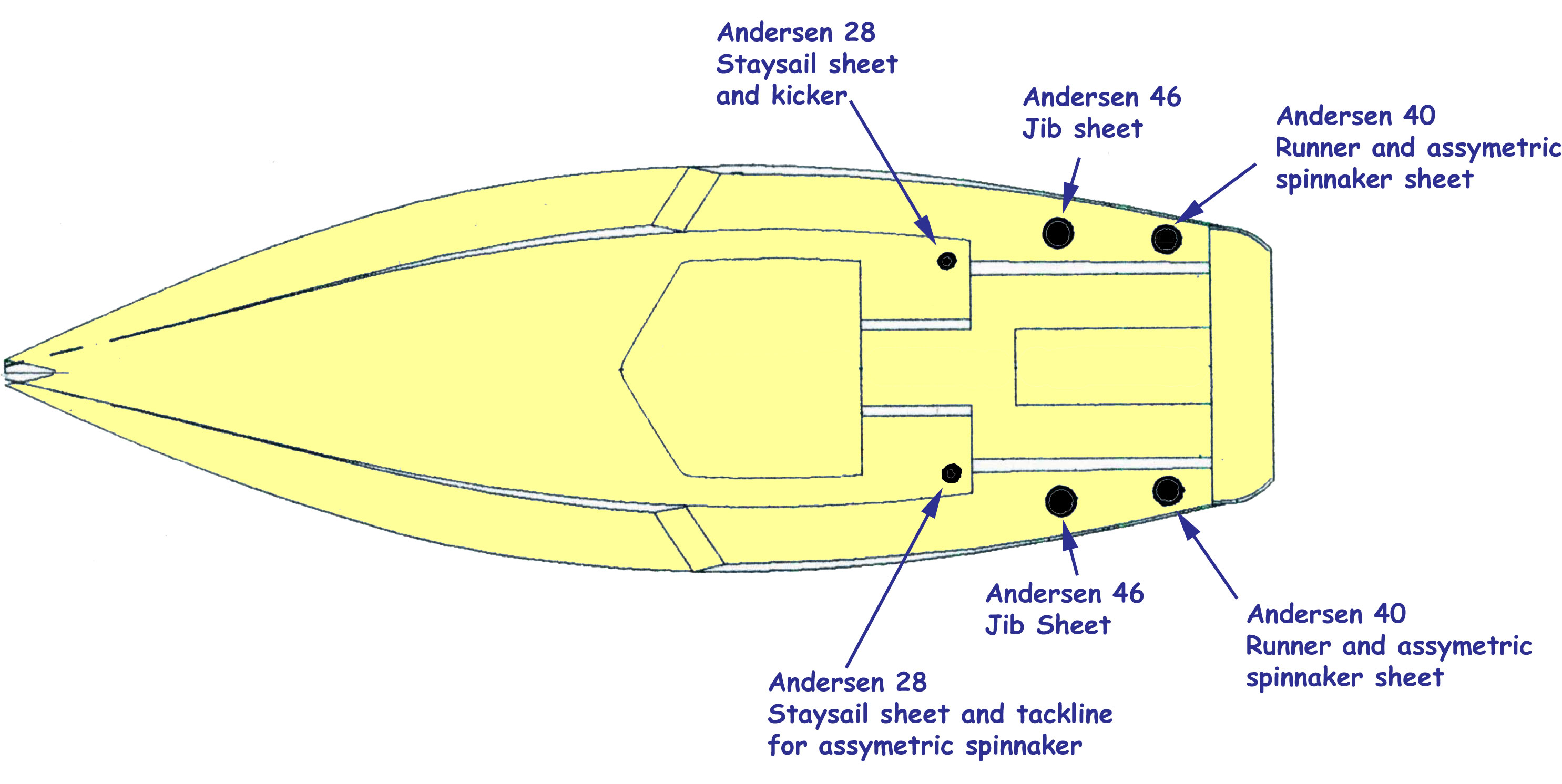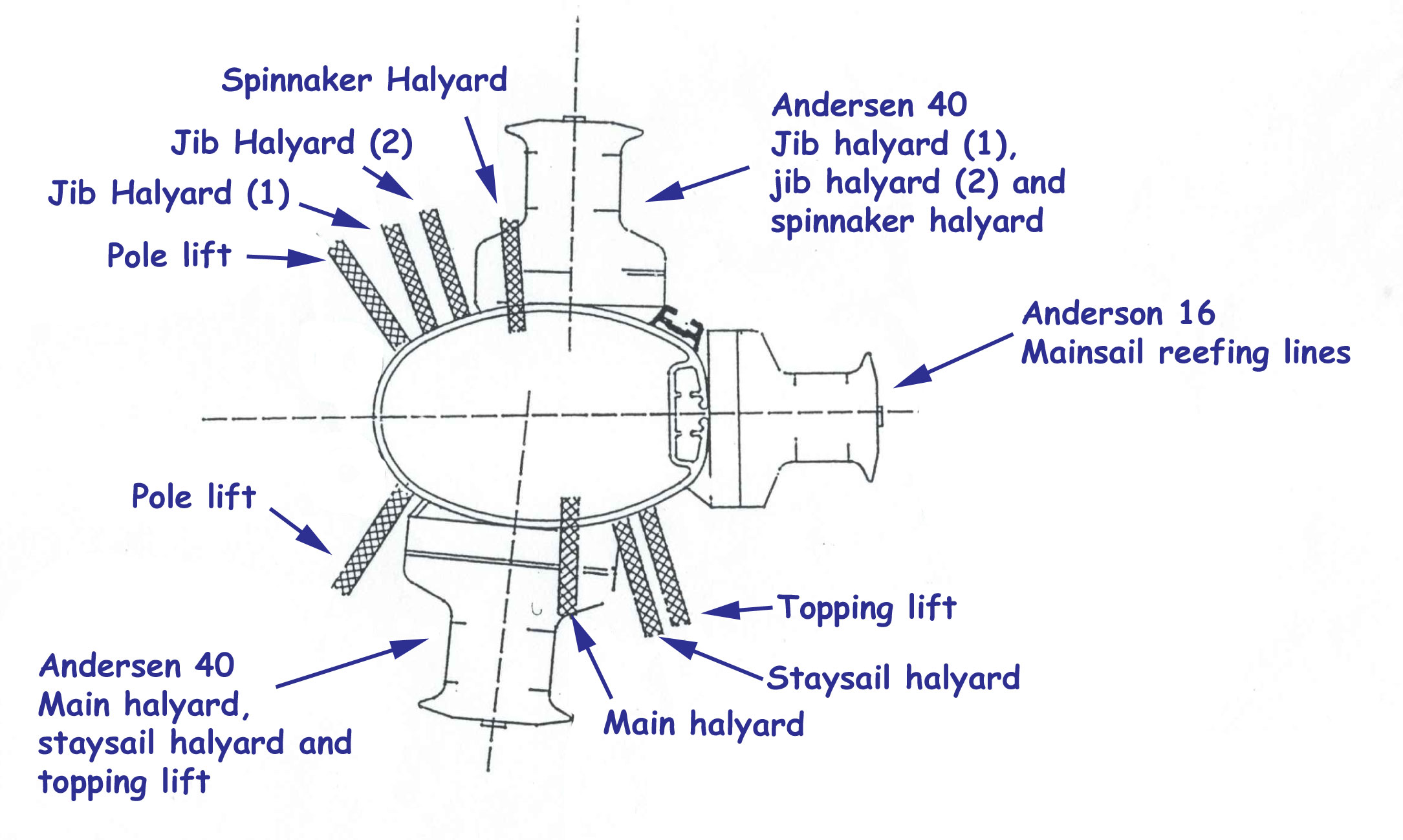- Home
- Rigging
- Running Rigging
- Sailboat Winches
Is it Time to Upgrade Your
Sailboat Winches?
In days of old when boats were made of wood, men were made of steel and sailboat winches hadn't been invented - well, sail handling was a rather grueling affair! Simple winches first appeared on cruising sailboats in the 1960's but it wasn't long before more complex, and significantly more efficient, winches became available.
 An Andersen 2-speed self-tailing winch
An Andersen 2-speed self-tailing winchMore power became available with the development of 2-speed, 3-speed and even 4-speed winches.
And for those with small biceps, deep pockets and power to spare, there are electrically powered and hydraulic winches.
When you buy a new sailboat, you're unlikely to be thinking about replacing the winches. But for a secondhand one, you may well be.
Or perhaps - like me - you were involved in building your own boat, in which case deciding on the winches would be entirely down to you.
Making the wrong choice at this stage would be an unfortunate and costly mistake.
We went through the alternatives...
Sailboat Winch Materials
It was nearly 20 years ago that we researched the winches for our 38ft (11.5m) sailboat Alacazam. I was horrified at the prices back then. In writing this article, I've discovered the current prices - I'm so pleased I chose well and won't need to replace them any time soon...
Anodized Aluminum
These are the least expensive and lightest of sailboat winches, but the anodizing is black which isn't great news for them in hot, sunny climates.
We were destined for the Caribbean, so anodised aluminium winches were out.
Chrome on Bronze
These are heavier and more expensive than aluminium winches.
They are very smart, but the chrome finish requires regular polishing if it's to stay that way in a marine environment.
Regular polishing of anything is not an activity we aspire to.
Stainless Steel
Lighter than the chrome versions but heavier than the aluminium ones.
They're more expensive size-for-size than both of them, but extremely robust.
They look great - and stay that way without the regular attention that the chrome versions need.
Sizing the Winches for Alacazam
The Cockpit Winches
We chose Andersen Stainless Steel winches, and made good use of their Winch Selection Guide to decide on the size of the winches they recommended for 36 to 39ft (11.0 to 11.9m) boats:~
Genoa Sheet
46/50
Spinnaker Sheet
28/34/40
Main Sheet
18/28
Genoa Halyard
34/40
Spinnaker Halyard
18/28
Main Halyard
28/34/40
Reefing Lines
12/18
 This crewman is probably wishing he'd got a self-tailing sailboat winch...
This crewman is probably wishing he'd got a self-tailing sailboat winch...This got us six cockpit winches - two 46's, two 40's and two 28's - arranged as shown below.
Twin Antal jammers enabled us to use the 28's for separate control lines - and to make life as convenient as possible for us, all winches were 2-speed self-tailers.
The headsail furling line was brought back down the the port side through a single Antal Jammer and a turning block so that we could use the spinnaker winch to heave it in if nececessary.
In practice, provided you don't have too much load in the sail, the Schaefer furling gear enables us to reef or douse the headsail by hand.
Incidentally, we don't have the staysail set on a furler; this sail is hanked on so that we can drop it and hoist a storm jib above it in a blow.
 The cockpit winch layout on our cruising sailboat Alacazam
The cockpit winch layout on our cruising sailboat AlacazamThe cockpit winches give us 10 lines to look after - 11 with the headsail furling line - all of which contrive to leave the place looking like a snake-pit at times.
If we were to bring the 3 mainsail reefing lines back to the cockpit, together with its halyard, outhaul and topping lift it would be a whole lot worse - and I'd still have to go to the mast to hook the luff cringle over the reefing hook. So we didn't do that, we left all the other lines at the mast.
I am not a great fan of in-mast or in-boom mainsail reefing systems...
The Mast Winches
We have three winches at the mast:
- An Andersen 40 2-speed self-tailing winch on the starboard side which handles - via an Antal Triple Jammer - two headsail halyards and the spinnaker halyard;
- An Andersen 16 single-speed for the three reefing lines from the integral jammers in the end of the boom.
The two pole lifts don't need a winch. They're used on our twin headsail tradewind rig and are cleated off on the forward side of the mast.
 Less convenient perhaps, but mast-mounted winches for halyard and other control lines reduce the tangle of lines that results from having them all led back to the cockpit
Less convenient perhaps, but mast-mounted winches for halyard and other control lines reduce the tangle of lines that results from having them all led back to the cockpitSailboat Winch Handles
If you use a winch handle at the mast or in any other situation where the axis of the winch is horizontal, it is absolutely essential that the handle is capable of being locked into the winch.
Otherwise if it slips out when you're putting your back into it you're likely to fall - and probably heave the winch handle over the side in the process.
Recent Articles
-
Which Type of Boat Fridge Is The Most Efficient?
Apr 24, 25 05:06 AM
The top opening boat fridge is reputed to be more efficient than the front opening type, but that may not be the case - and here, amongst other boat refrigeration considerations, is why -
Multihull Autopilot Selection is Not Straightforward
Apr 19, 25 01:25 PM
Whether its for a catamaran or a trimaran, tiller or wheel steered, a multi hull autopilot must be endowed with specific performance characteristics... -
Wheel-Steering Autopilots: Your Questions Answered...
Apr 18, 25 03:45 PM
Whatever your question, you should find the answer here

















